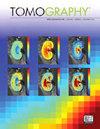断层合成断晕征:对新诊断乳腺肿瘤分类的诊断价值
IF 2.2
4区 医学
Q2 RADIOLOGY, NUCLEAR MEDICINE & MEDICAL IMAGING
引用次数: 0
摘要
背景:与传统的二维乳房x线摄影相比,数字乳房断层合成(DBT)提供了更高的乳房病变检出率。环形低密度伪影环绕致密病灶是DBT的常见副产物。本研究的目的是评估跨越这个光晕的微小变化(称为“断晕征”)是否可以改善病变的分类。方法:本回顾性研究经当地伦理审查委员会批准。在连续筛查288名患者后,对191名女性参与者的DBT研究进行了评估,这些女性参与者接受了常规乳房x光检查,随后进行了组织学证实的乳房检查。检查变量包括患者年龄、组织学诊断、建筑变形、最大尺寸、最大光晕深度、明显边缘、不规则形状和破碎的光晕征象。结果:一般来说,较高的光晕强度预示着恶性肿瘤(p = 0.031),而破碎的光晕征象与恶性肿瘤密切相关(p <0.0001,优势比(OR) 6.33),以及结构畸变(p = 0.012, OR 3.49)和弥散边缘(p = 0.006, OR 5.49)。对于致密性乳房(ACR C/D)尤其如此,其中破碎的晕征是预测恶性肿瘤的唯一因素(p = 0.03, 5.22 OR)。结论:在新发现的乳腺病变中,dbt相关的晕状伪影值得深入调查,因为它们与恶性肿瘤有关。“破晕征”——在肿瘤周围低密度区域出现直径可变的小线——是恶性肿瘤的强烈信号,特别是在致密的乳房中,由于周围组织的存在,结构扭曲可能会被混淆。本文章由计算机程序翻译,如有差异,请以英文原文为准。
The Tomosynthesis Broken Halo Sign: Diagnostic Utility for the Classification of Newly Diagnosed Breast Tumors
Background: Compared to conventional 2D mammography, digital breast tomosynthesis (DBT) offers greater breast lesion detection rates. Ring-like hypodense artifacts surrounding dense lesions are a common byproduct of DBT. This study’s purpose was to assess whether minuscule changes spanning this halo—termed the “broken halo sign”—could improve lesion classification. Methods: This retrospective study was approved by the local ethics review board. After screening 288 consecutive patients, DBT studies of 191 female participants referred for routine mammography with a subsequent histologically verified finding of the breast were assessed. Examined variables included patient age, histological diagnosis, architectural distortion, maximum size, maximum halo depth, conspicuous margins, irregular shape and broken halo sign. Results: While a higher halo strength was indicative of malignancy in general (p = 0.031), the broken halo sign was strongly associated with malignancy (p < 0.0001, odds ratio (OR) 6.33), alongside architectural distortion (p = 0.012, OR 3.49) and a diffuse margin (p = 0.006, OR 5.49). This was especially true for denser breasts (ACR C/D), where the broken halo sign was the only factor predicting malignancy (p = 0.03, 5.22 OR). Conclusion: DBT-associated halo artifacts warrant thorough investigation in newly found breast lesions as they are associated with malignant tumors. The “broken halo sign”—the presence of small lines of variable diameter spanning the peritumoral areas of hypodensity—is a strong indicator of malignancy, especially in dense breasts, where architectural distortion may be obfuscated due to the surrounding tissue.
求助全文
通过发布文献求助,成功后即可免费获取论文全文。
去求助
来源期刊

Tomography
Medicine-Radiology, Nuclear Medicine and Imaging
CiteScore
2.70
自引率
10.50%
发文量
222
期刊介绍:
TomographyTM publishes basic (technical and pre-clinical) and clinical scientific articles which involve the advancement of imaging technologies. Tomography encompasses studies that use single or multiple imaging modalities including for example CT, US, PET, SPECT, MR and hyperpolarization technologies, as well as optical modalities (i.e. bioluminescence, photoacoustic, endomicroscopy, fiber optic imaging and optical computed tomography) in basic sciences, engineering, preclinical and clinical medicine.
Tomography also welcomes studies involving exploration and refinement of contrast mechanisms and image-derived metrics within and across modalities toward the development of novel imaging probes for image-based feedback and intervention. The use of imaging in biology and medicine provides unparalleled opportunities to noninvasively interrogate tissues to obtain real-time dynamic and quantitative information required for diagnosis and response to interventions and to follow evolving pathological conditions. As multi-modal studies and the complexities of imaging technologies themselves are ever increasing to provide advanced information to scientists and clinicians.
Tomography provides a unique publication venue allowing investigators the opportunity to more precisely communicate integrated findings related to the diverse and heterogeneous features associated with underlying anatomical, physiological, functional, metabolic and molecular genetic activities of normal and diseased tissue. Thus Tomography publishes peer-reviewed articles which involve the broad use of imaging of any tissue and disease type including both preclinical and clinical investigations. In addition, hardware/software along with chemical and molecular probe advances are welcome as they are deemed to significantly contribute towards the long-term goal of improving the overall impact of imaging on scientific and clinical discovery.
 求助内容:
求助内容: 应助结果提醒方式:
应助结果提醒方式:


